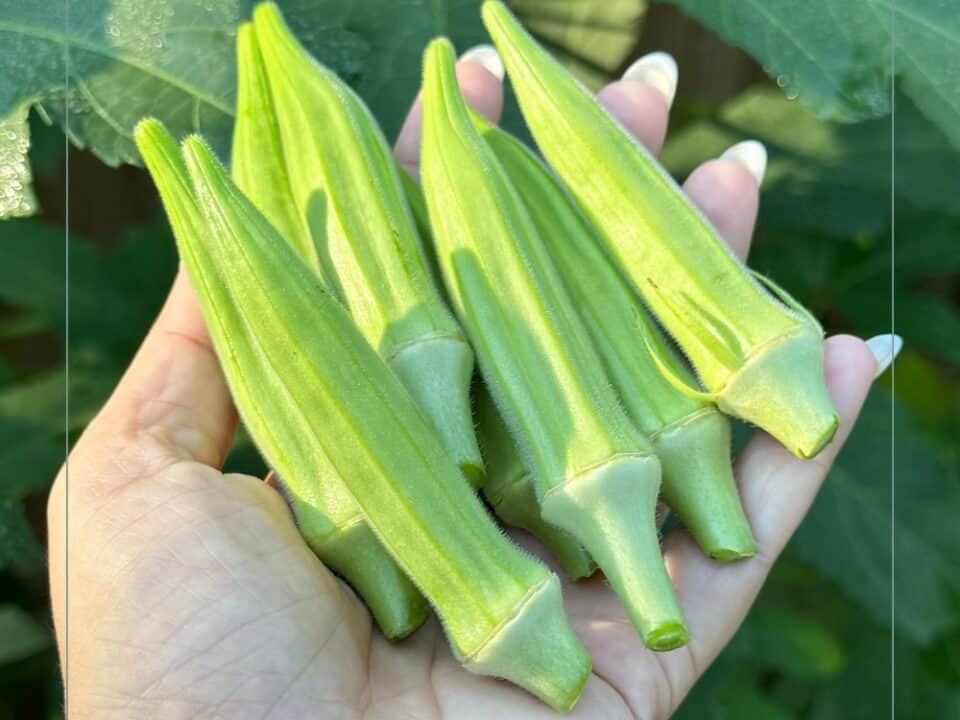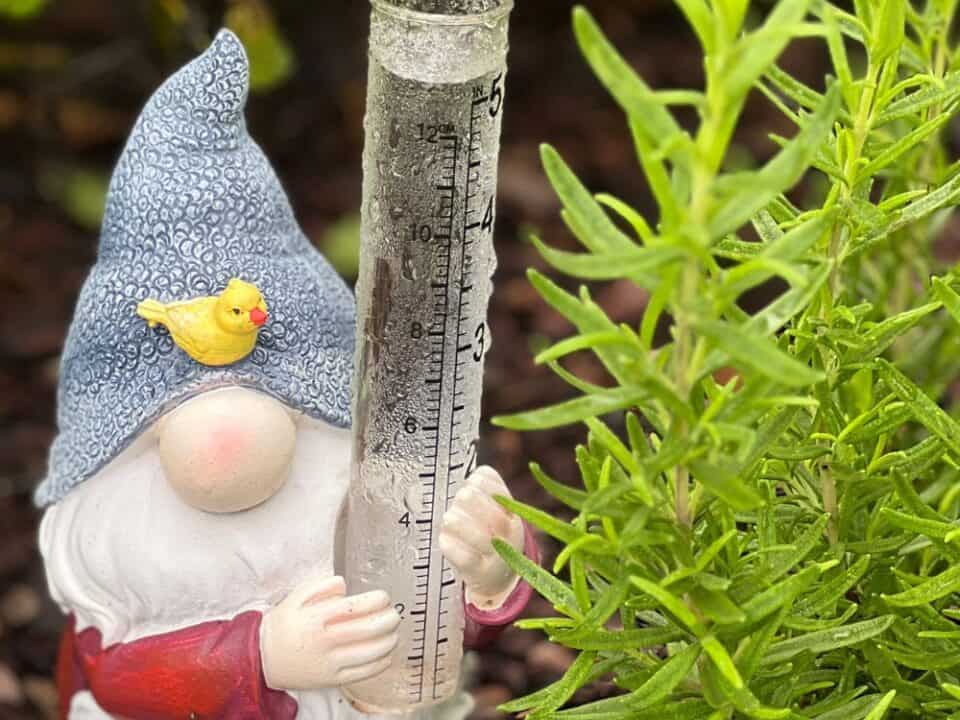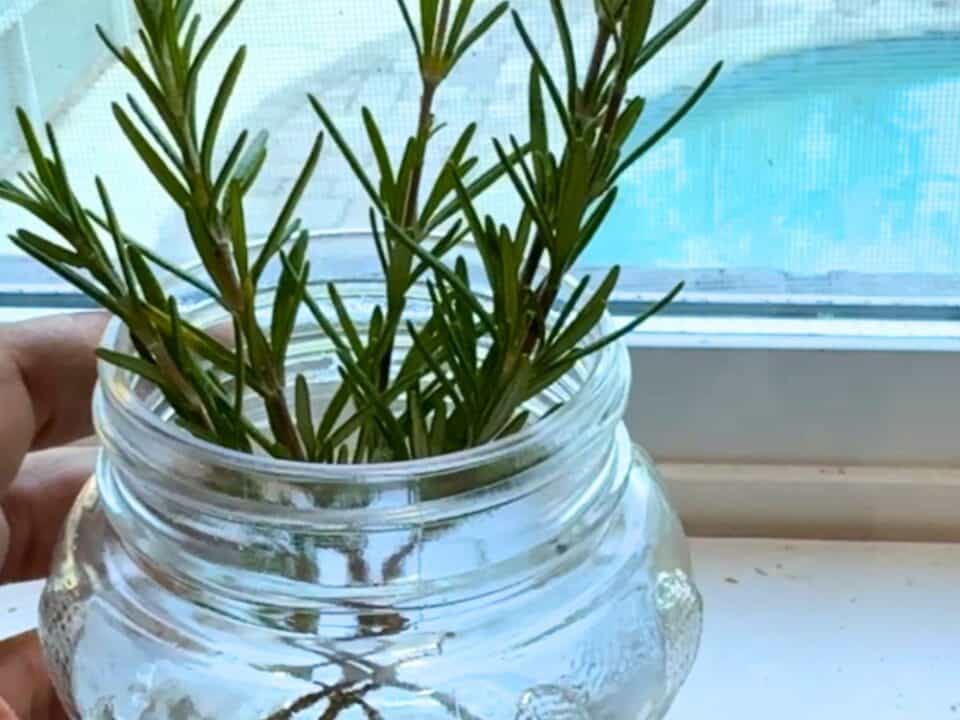Heat-Tolerant Vegetables for Florida
If you garden in Florida, you already know that “full sun” on a seed packet doesn’t mean “full FLORIDA sun.” Our sun is hotter, harsher, and will burn a plant to a crisp in no time. If you want vegetables that can handle it, you have to pick ones that actually thrive in the heat instead of just surviving it.
The good news? There are plenty of vegetables that love our long, hot summers. You just have to know which ones will keep producing when it feels like the air itself is cooking. These are the tried-and-true options that work in a Florida garden. Bonus, they are foods you will actually eat.
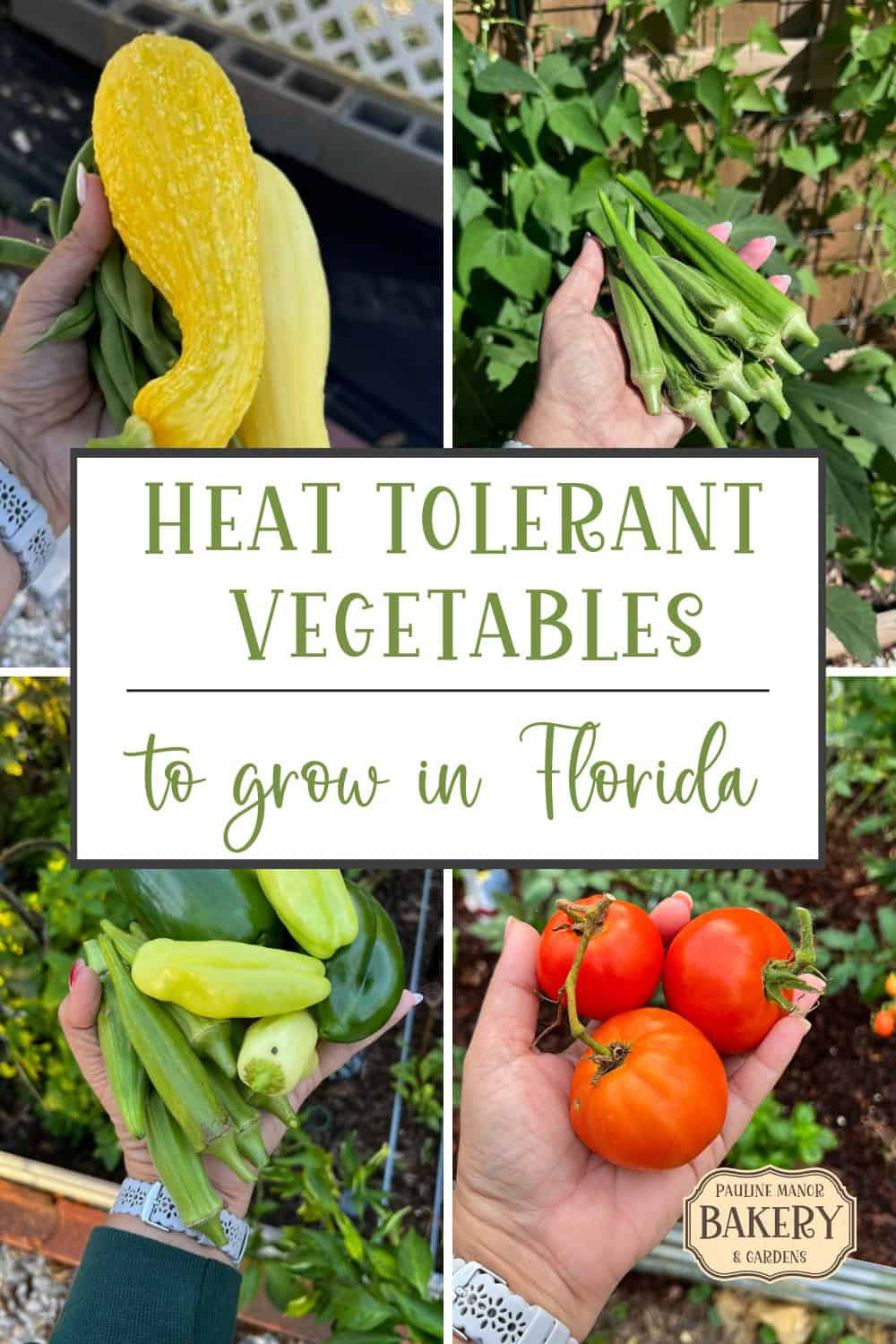
Okra
Okra is one of the most reliable vegetables you can grow in a Florida summer. Once it’s established, it thrives in our heat and humidity without much maintenance. You can direct sow seeds in warm soil or start with hearty seedlings from your local nursery. Either way, your plant will start producing quickly, and I have found it to be the most prolific vegetable in my garden.
One thing to note, you want to harvest the pods when they’re young and tender (2″-3″ long, tops) for the best flavor and texture, but this is also what will help to keep the plant producing. If you wait too long, not only do the pods get tough and stringy, but your yield will slow down significantly.
Okra grows tall and strong, so it works well along the back of a raised bed or in its own dedicated row. The plants are also pretty enough to tuck into a flower garden if you’re short on space. The blooms are pale yellow with a dark center and look almost tropical. Keep the plants watered during dry spells, and you’ll be picking pods every few days until well into fall.
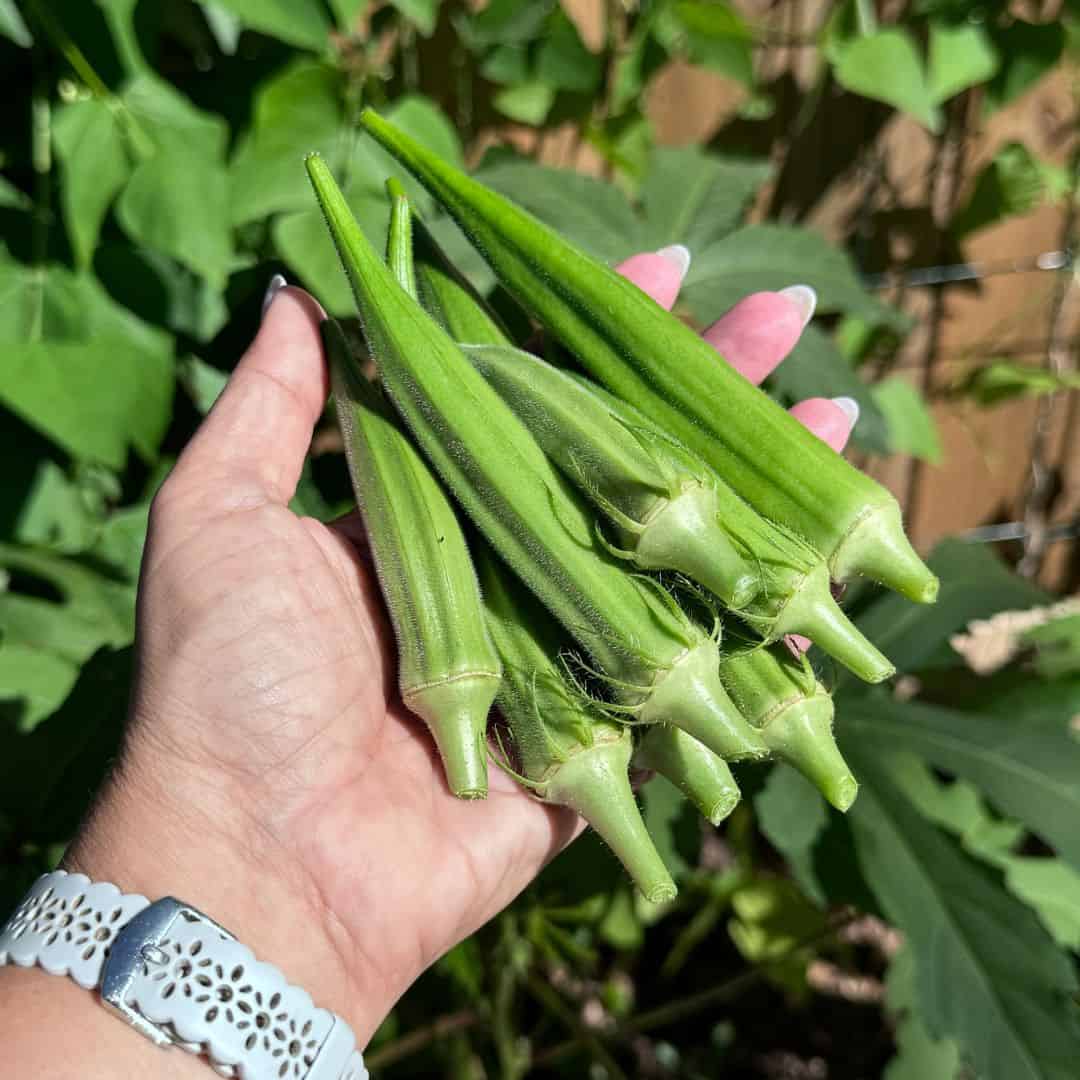
Southern Peas
Crowder peas, black-eyed peas, and purple hull peas are all heat-loving workhorses in the garden. They grow best in the high temperatures that make other crops give up. These peas are perfect for Florida because they can handle drought conditions and still produce. Direct sow them and water consistently for the best results. They’ll reward you with a big harvest that’s easy to shell and store for later.
Southern peas also improve your soil by fixing nitrogen, which helps feed whatever you plant after them. They can be planted as a main crop or as a cover crop to rest and replenish a bed. The plants are low maintenance, and even if you forget about them for a few days in the middle of summer, they will still be there waiting for you.
Beans (Bush and Pole)
Beans are another crop that loves the heat, especially if you help the soil stay cooler with mulch. Bush beans are quick to mature and give you a solid harvest in a short time, while pole beans keep producing for longer if you keep picking. You can also plant a new round every two to three weeks to have a steady supply throughout the summer. They’re easy to grow from seed and don’t require much space, so they’re a great choice for small gardens too.
For the best results, make sure beans have consistent moisture. Heat-tolerant varieties will keep going even when temperatures soar, and pole beans can take advantage of vertical space, which also helps with airflow. Fresh beans are so much better than anything you buy from the store, and they freeze and can well if you grow more than you can eat at once.
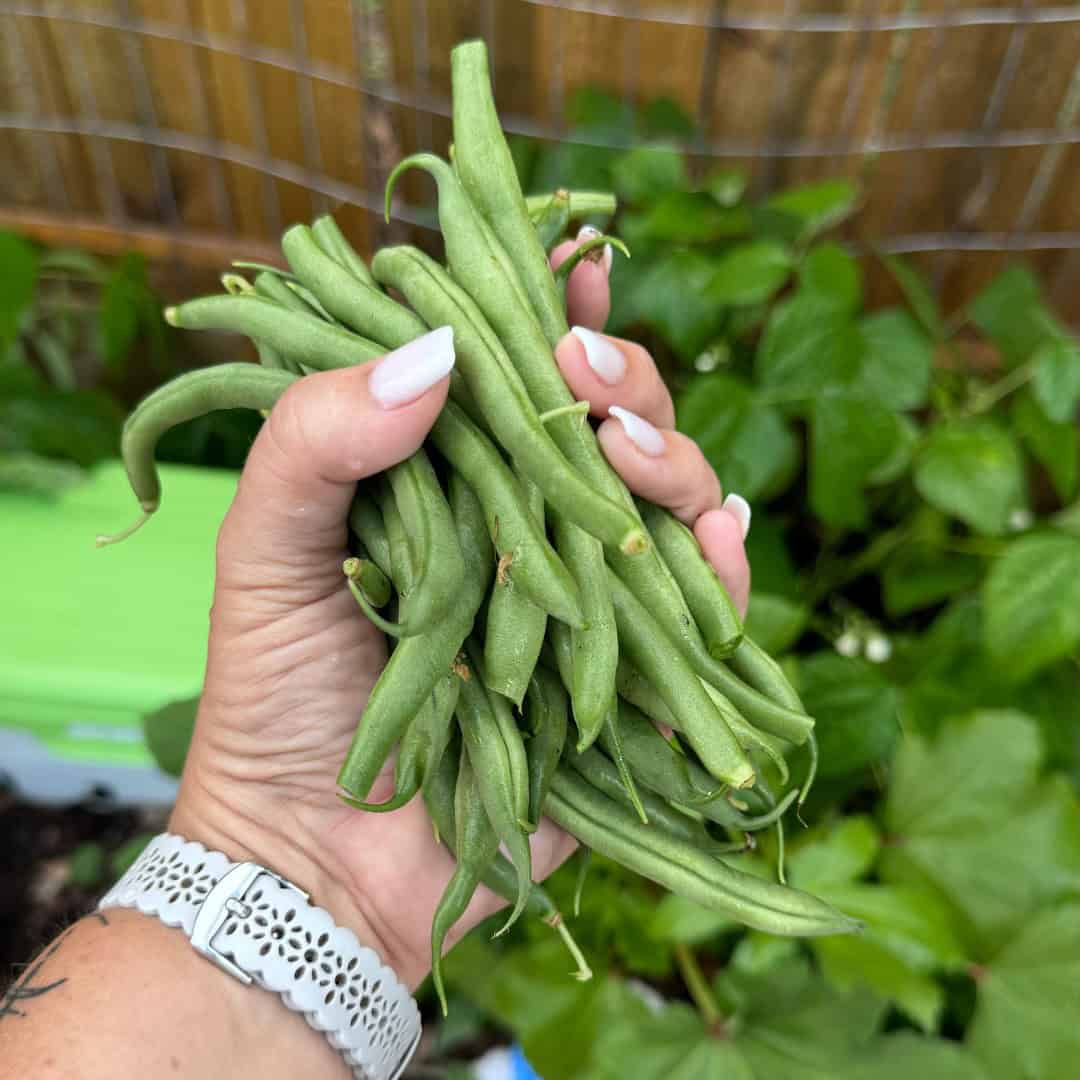
Peppers (Jalapeño, Banana, Bell)
Peppers are at their best when the temperatures climb. Jalapeños and banana peppers are especially forgiving, while bell peppers appreciate consistent moisture to keep them from getting stressed. Start them early in the season so they’re established before the hottest weather hits. Once they’re going, peppers will produce heavily into the fall.
Peppers do well in garden beds and in large containers, making them a good option if you have limited space or need to move plants for protection during storms. Harvest them often to encourage more fruit. If you leave peppers on the plant to fully ripen and change color, you’ll get a sweeter flavor, but it will slow down overall production. Pick them green for a bigger harvest over the season.
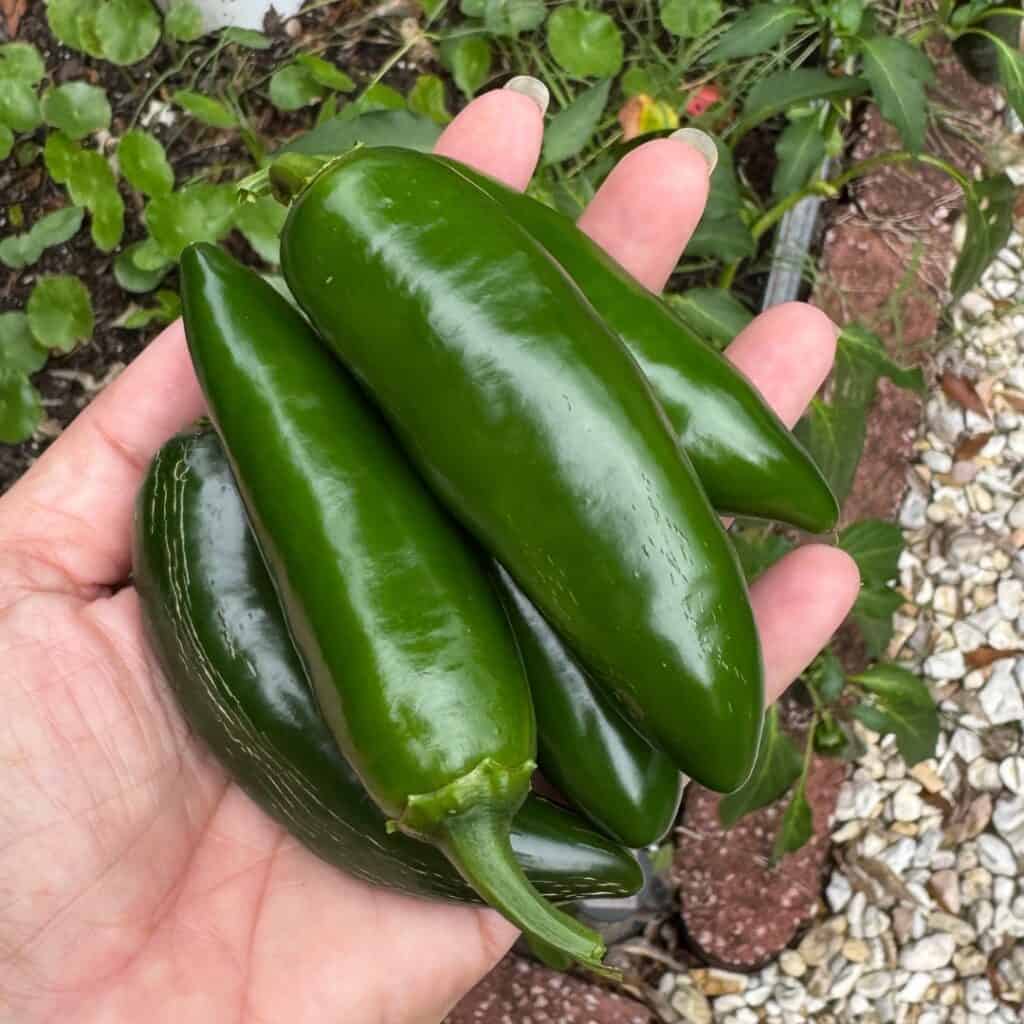
Summer Squash
Yellow squash, zucchini, and pattypan squash are fast-growing crops that thrive in warm weather. Plant them in waves every few weeks to keep the harvest coming all summer. The plants can fall victim to squash vine borers, so it’s worth checking them regularly. If you’ve read my post on dealing with vine borers, you already know the signs to look for and how to get ahead of them before they wipe out your plants.
Give squash plenty of room for airflow and plant in rich soil with good drainage. Water at the base of the plant to help prevent powdery mildew on the leaves, which can show up in humid conditions. Harvest squash when it’s small for the best flavor and texture, and check daily because it can go from perfect to oversized in less than 24 hours in the heat.
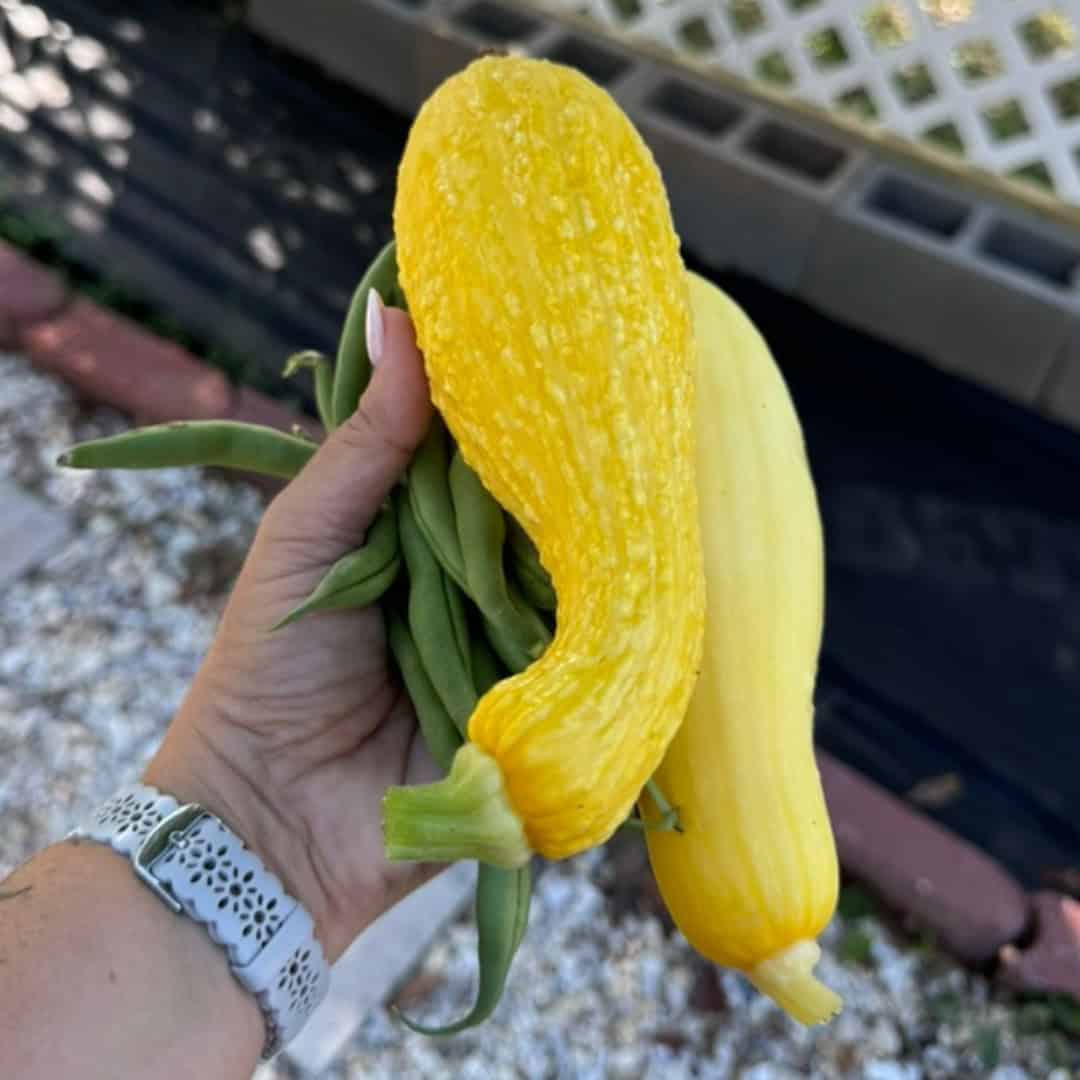
Sweet Potatoes
Sweet potatoes are one of the easiest crops for a Florida summer. They grow underground where the soil stays cooler, and the vines help protect the ground from drying out. Plant slips in spring and harvest in late summer or early fall.
Sweet potatoes don’t need much fertilizer, but they do appreciate loose soil so the roots can develop easily. In addition to the tubers, the tender young leaves can be cooked and eaten like spinach, making sweet potatoes a dual-purpose crop. They store well and are a great staple to grow if you want to stretch your harvest into the cooler months.
Tomatoes
Tomatoes can be a little trickier in the Florida heat, but they’re still worth growing. Look for heat-tolerant or heat-set varieties that can handle high temperatures without dropping blossoms. Even with the right varieties, tomatoes appreciate some shade during the hottest part of the day. Shade cloth can make a huge difference in fruit set and leaf health.
Tomatoes also benefit from deep watering to encourage strong root growth. Mulch around the base to help retain soil moisture and keep weeds down. If you notice cracking or splitting, harvest tomatoes when they start to blush and let them finish ripening indoors. This helps avoid pest damage and preserves the flavor.
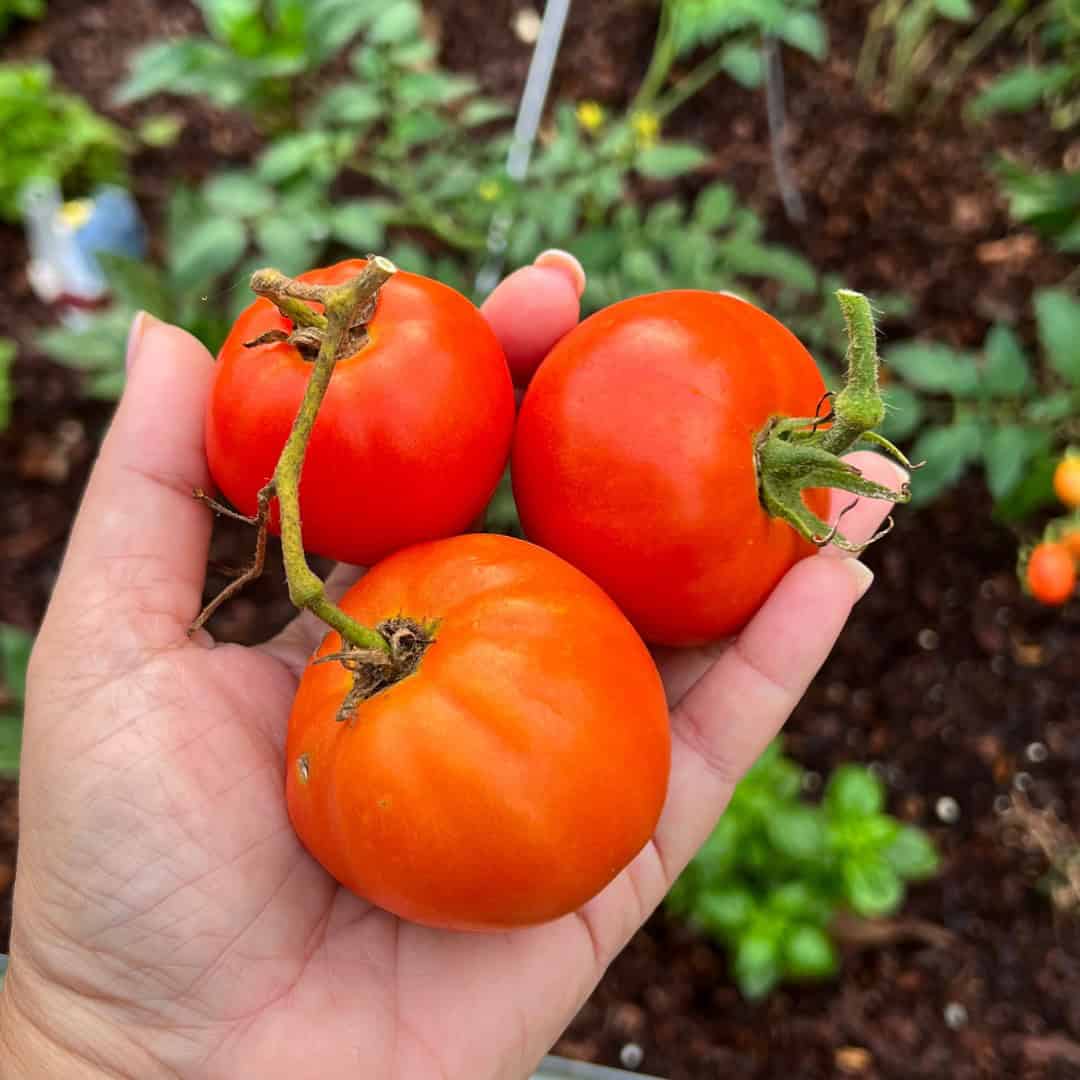
Cucumbers
Cucumbers grow quickly in warm weather, but don’t appreciate being in full Florida sun all day. Give them morning sun and afternoon shade if possible, or use a shade cloth to protect them during peak heat. Keep them well-watered and mulch around the base to help the soil retain moisture. With the right care, you’ll have plenty of cucumbers for fresh eating and pickling.
Train cucumbers to climb a trellis or fence to save space and improve airflow. This makes it easier to spot fruit, reduces pest issues, and keeps the cucumbers cleaner. Pick them regularly before they get too large and bitter. If you’re growing slicing cucumbers, aim to harvest when they’re about six to eight inches long.
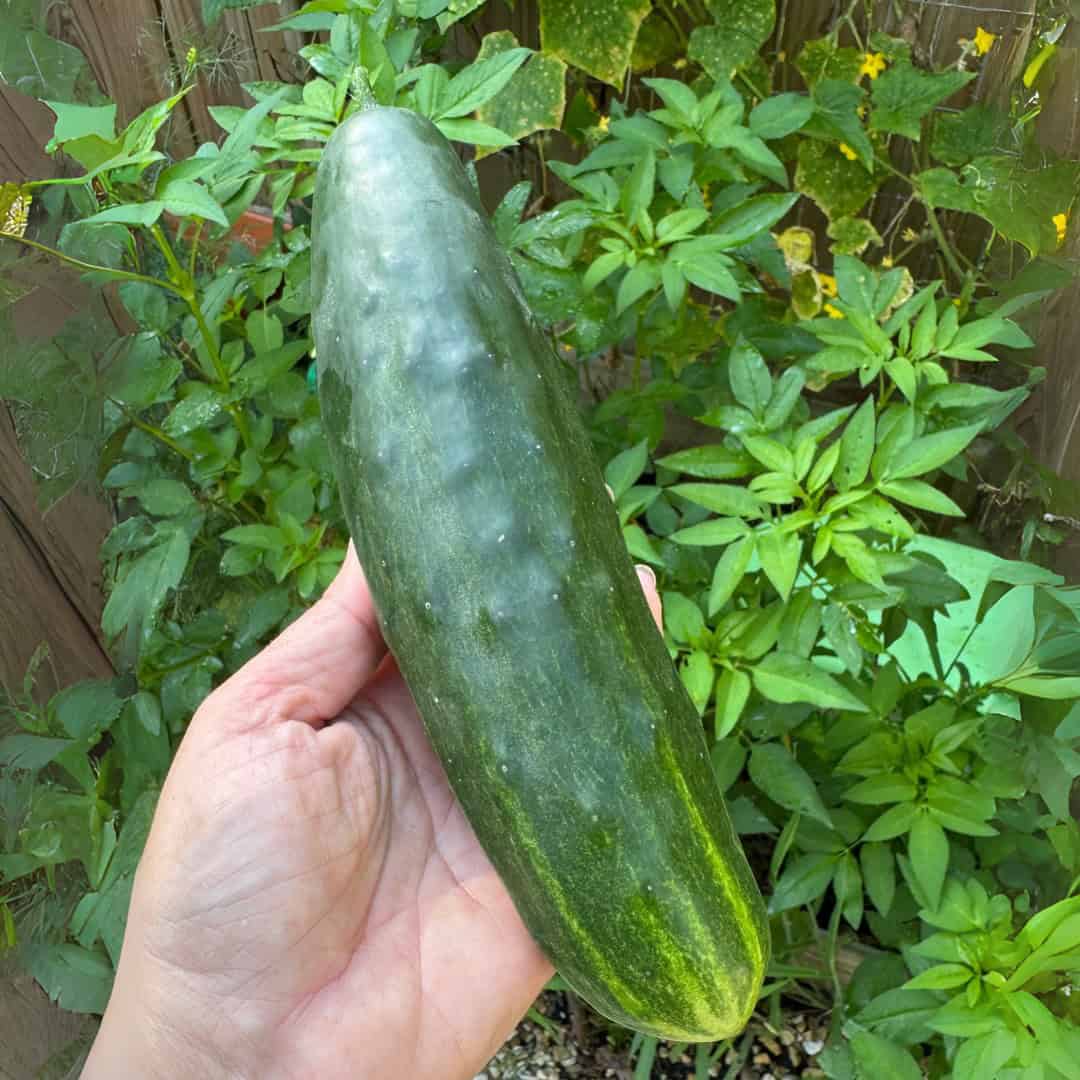
Eggplant
Eggplant loves hot weather and will keep producing well into the fall. It does best when planted in rich, well-draining soil and given consistent moisture. Once the plant is established, it can handle long stretches of heat without slowing down.
Eggplants can get heavy as the fruit grows, so staking or caging them helps keep plants upright and productive. Harvest when the fruits are glossy and firm for the best flavor and texture. If the skin starts to look dull, the fruit is overripe and will taste bitter.
Watermelon
Watermelon is a natural fit for Florida gardens. It thrives in the heat and uses its sprawling vines to shade the soil and hold in moisture. Give it plenty of space to spread out and a consistent watering schedule. Harvest when the underside of the fruit turns creamy yellow and the tendril closest to the stem dries up.
Choose varieties that mature quickly if you want a harvest before the end of summer. Small, personal-sized melons are great for smaller gardens and still give you that sweet, refreshing flavor. Watermelon vines can handle full sun without a problem, making them one of the easiest crops for our climate.
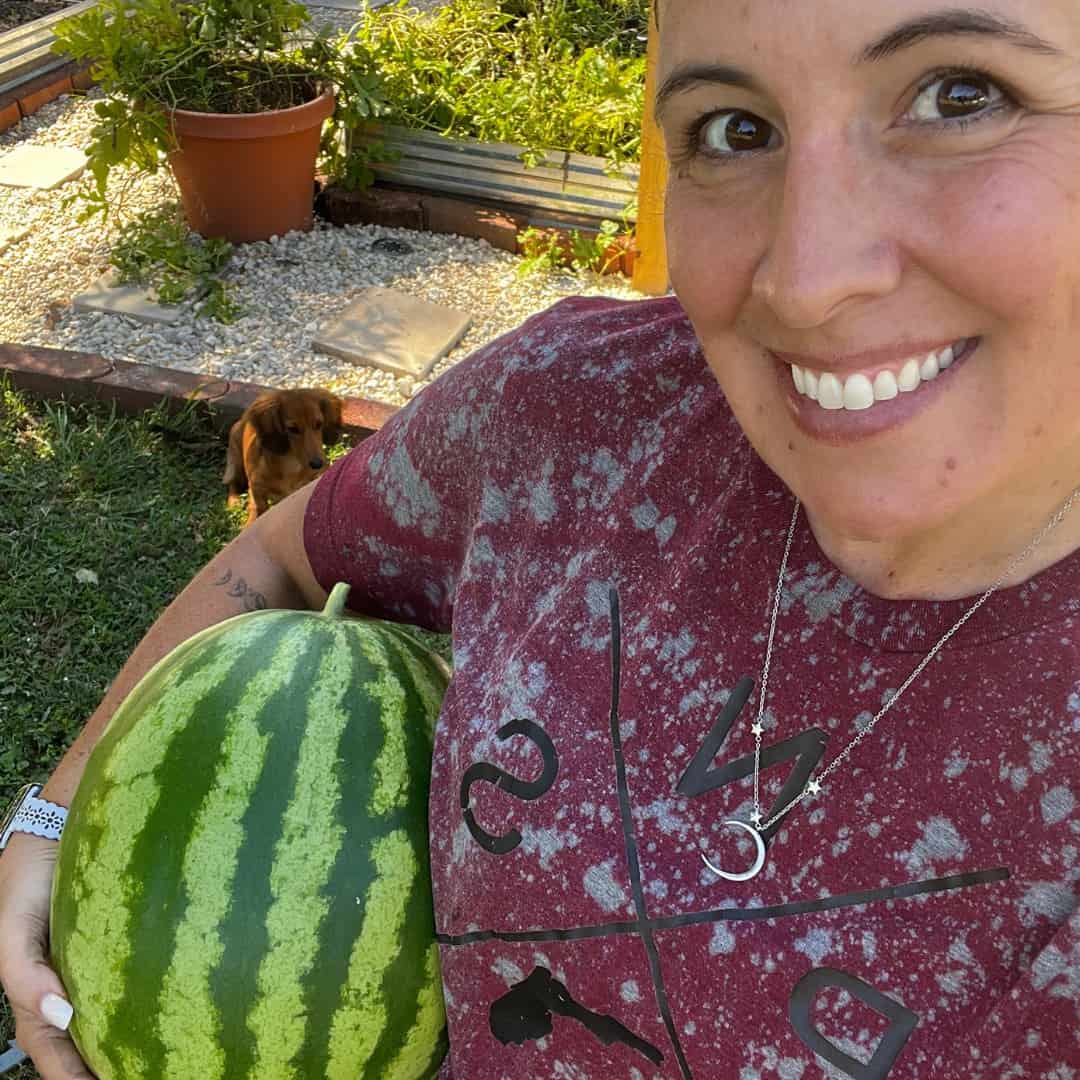
Why Florida’s Full Sun Is Different
In most gardening advice, “full sun” means six to eight hours of direct sunlight. In Florida, that often means six to eight hours of intense heat and UV that can burn your skin in minutes. Many plants need protection to handle it, even those that love heat.
Mulch helps keep roots cool and moist, while shade cloth can be a game-changer for crops that get stressed easily. Watering early in the morning gives plants the chance to absorb moisture before the heat of the day. Afternoon watering can shock plants in extreme heat, so stick to mornings whenever possible.
Planting Tips for Heat Success
Keeping a Florida garden going in the heat is all about giving your plants a fighting chance. Mulch helps the soil stay cooler and keeps moisture from evaporating too quickly, and watering in the morning lets the plants take in what they need before the sun is high and harsh. I like to harvest as soon as vegetables are ready so the plants keep producing, and I stick to heat-tolerant or heat-set varieties that are bred for our kind of weather. Planting in stages means there’s always something new coming in, and staying on top of pest problems before they have a chance to spread can make the difference between a steady summer harvest and a garden that gives up by July.
With the right vegetables, some thoughtful planting, and a little extra protection, you can have a productive garden all summer long.

